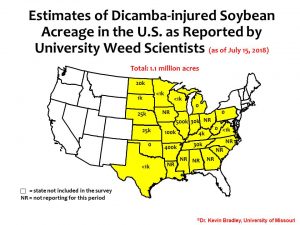Christensen et al., 2016
Christensen, C. H., Barry, K. H., Andreotti, G., Alavanja, M. C., Cook, M. B., Kelly, S. P., Burdett, L. A., Yeager, M., Beane Freeman, L. E., Berndt, S. I., & Koutros, S.; “Sex Steroid Hormone Single-Nucleotide Polymorphisms, Pesticide Use, and the Risk of Prostate Cancer: A Nested Case-Control Study within the Agricultural Health Study;” Frontiers in Oncology, 2016, 6, 237; DOI: 10.3389/fonc.2016.00237.
ABSTRACT:
Experimental and epidemiologic investigations suggest that certain pesticides may alter sex steroid hormone synthesis, metabolism or regulation, and the risk of hormone-related cancers. Here, we evaluated whether single-nucleotide polymorphisms (SNPs) involved in hormone homeostasis alter the effect of pesticide exposure on prostate cancer risk. We evaluated pesticide-SNP interactions between 39 pesticides and SNPs with respect to prostate cancer among 776 cases and 1,444 controls nested in the Agricultural Health Study cohort. In these interactions, we included candidate SNPs involved in hormone synthesis, metabolism or regulation (N = 1,100), as well as SNPs associated with circulating sex steroid concentrations, as identified by genome-wide association studies (N = 17). Unconditional logistic regression was used to estimate odds ratios (ORs) and 95% confidence intervals (CIs). Multiplicative SNP-pesticide interactions were calculated using a likelihood ratio test. We translated p-values for interaction into q-values, which reflected the false discovery rate, to account for multiple comparisons. We observed a significant interaction, which was robust to multiple comparison testing, between the herbicide dicamba and rs8192166 in the testosterone metabolizing gene SRD5A1 (p-interaction = 4.0 x 10(-5); q-value = 0.03), such that men with two copies of the wild-type genotype CC had a reduced risk of prostate cancer associated with low use of dicamba (OR = 0.62 95% CI: 0.41, 0.93) and high use of dicamba (OR = 0.44, 95% CI: 0.29, 0.68), compared to those who reported no use of dicamba; in contrast, there was no significant association between dicamba and prostate cancer among those carrying one or two copies of the variant T allele at rs8192166. In addition, interactions between two organophosphate insecticides and SNPs related to estradiol metabolism were observed to result in an increased risk of prostate cancer. While replication is needed, these data suggest both agonistic and antagonistic effects on circulating hormones, due to the combination of exposure to pesticides and genetic susceptibility, may impact prostate cancer risk. FULL TEXT

